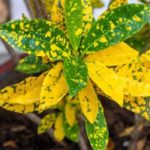The practice of Feng Shui often takes into account the placement of plants in front of a house and how it can affect the occupants’ fortune and health. For this reason, many homeowners are particular about the types of plants they choose to adorn their homes. In this article, we will explore whether planting a tamarind tree in front of your house is a good idea and if it aligns with Feng Shui principles. Let’s dive in!
1 An Overview of the Tamarind Tree
Origin of the Tamarind Tree
The tamarind tree, with the scientific name Tamarindus indica, is a tropical tree native to Africa. Today, it is commonly found in Asian countries, including Vietnam, as well as in Latin America. It is often used as an ornamental tree or an industrial crop planted along roadsides.
 The tamarind tree bears the scientific name Tamarindus indica
The tamarind tree bears the scientific name Tamarindus indica
Characteristics of the Tamarind Tree
Botanical Features
- Trunk: The trunk is woody and consists of two parts: a hard, dark red core and a yellowish sapwood layer. In nature, the tree can grow up to 20 meters tall.
- Leaves: The leaves are bipinnate, with 10-40 small leaflets. They exhibit a unique behavior, curling up during the summer (known as sleeping leaves) and unfurling when the weather cools down.
- Flowers: The flowers grow in clusters, with each cluster attached to a leaf stem containing multiple small stems, each bearing a single flower.
- Fruit: The fruit is brown, covered with hair, and contains multiple seeds and fleshy pulp. When unripe, the fruit is hard and sour, often used for cooking. As it ripens, it develops a sweet and sour taste, perfect for making refreshing drinks or desserts.
 The tamarind tree has a woody trunk, bipinnate leaves, and flowers that grow in clusters.
The tamarind tree has a woody trunk, bipinnate leaves, and flowers that grow in clusters.
Ecological Features
As a tropical tree, the tamarind thrives in hot climates and dry soil, even in frost-prone areas. This makes it a resilient and low-maintenance plant, favored by many gardeners.
 Tamarind trees flourish in hot climates and dry soil conditions.
Tamarind trees flourish in hot climates and dry soil conditions.
2 Feng Shui Significance of the Tamarind Tree
The tamarind tree’s ability to thrive in harsh conditions symbolizes tenacity and resilience in the face of adversity. It represents the spirit of perseverance and striving for success, even in challenging circumstances.
Additionally, the tamarind tree bears an abundance of fruit, which, in Feng Shui, signifies wealth and the fruition of one’s efforts. It embodies the idea of reaping bountiful rewards after consistent hard work.
 The tamarind tree symbolizes tenacity and the pursuit of success, regardless of obstacles.
The tamarind tree symbolizes tenacity and the pursuit of success, regardless of obstacles.
3 Is Planting a Tamarind Tree in Front of Your House a Good Idea?
Given the symbolic meanings of the tamarind tree, planting one in front of your house is generally considered favorable. However, according to Feng Shui principles, the entrance of a house is where positive energy, wealth, and luck enter, so the placement and direction of the tree are crucial.
- Opt for a bonsai-style tree with a shorter height to avoid obstructing the pathway and maintain aesthetic appeal.
- Position the tree slightly off to one side to ensure it doesn’t block the path, and regularly prune dry branches to maintain a spacious and open environment.
 Choose a bonsai-style tamarind tree for easier maintenance and to avoid blocking the pathway.
Choose a bonsai-style tamarind tree for easier maintenance and to avoid blocking the pathway.
In conclusion, we hope this article has provided valuable insights into the question of whether planting a tamarind tree in front of your house is a good idea and if it aligns with Feng Shui principles. May your home always be filled with positive energy and good fortune!
2023 Lunar New Year Gift Ideas for Older Family and Friends
As 2021 approaches, families worldwide are gathering to celebrate the special bond between grandparents and their grandchildren. To show their love and admiration, these thoughtfully chosen gifts will bring a smile to the face of the elderly. Here, we have compiled a list of the 13 most meaningful Tet presents that can bring joy to our beloved grandparents.





































